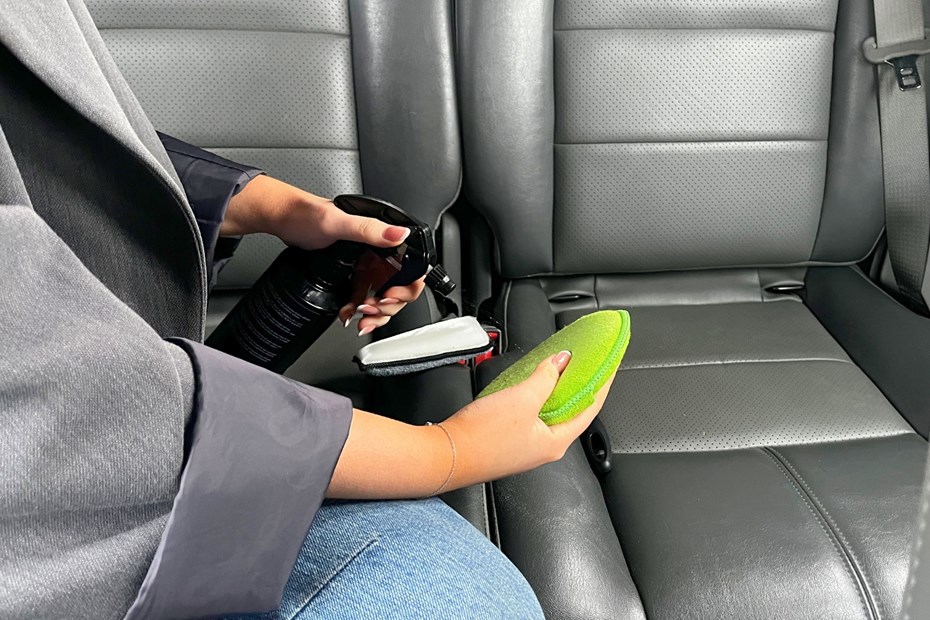Cleaning leather car seats is essential. Crumbs, dirt, and food look unpleasant on surfaces at the best of times, and a leather car interior is no exception. Without regular cleaning and maintenance at least every three to six months your leather seats could start to dry out, develop cracks and fade. With a little love and the right car cleaning products your leather seats will be looking brand new.
Inevitably general wear and tear is going to happen, with your car interior taking the brunt of sun exposure and UV damage. Not ideal, when your vehicle is looking spotless from the outside but appears withered from inside. But worry not because we’ll take you through step-by-step guide on how to effectively clean your leather seats.
What is the best way to clean leather seats in a car?
Cleaning your car’s leather interior is very simple and can be done using household appropriate items or a sufficient car leather cleaner. It’s important to note that leather is one of the most sensitive automotive materials, therefore the frequency with which yours seats are used and the amount of UV exposure they receive all determine how regularly you will need to clean them.
What household products can you use to clean leather?
Not everyone has leather car cleaner to hand in their house but most people will have hot water, soap or vinegar lying around in their cupboard. One tablespoon of castile soap (in liquid form) mixed with one cup of warm water is a great alternative for cleaning leather. Once the solution is mixed, damp a clean microfibre cloth and start rubbing it on the leather in circular motions.
Alternatively, you can use a vinegar and water solution. Using one part vinegar to one part warm water, repeat the same steps as above. Make sure you allow the leather to dry after doing this, and wipe away any excess liquid.
Here’s our step-by-step guide to cleaning leather car seats
- Vacuum seats to remove excess dirt
- Apply leather cleaner
- Wipe seats with a microfibre cloth
- Condition the leather
1. Vacuum seats to remove excess dirt
Begin the process by vacuuming the leather car seats to remove any loose dirt, crumbs, or debris. Ideally, use a vacuum cleaner with a soft brush attachment to gently clean the leather seats and avoid any scratches from the bristles. Be mindful to vacuum the tight crevices between the cushions, as more dirt builds up there than you might think.
2. Apply leather cleaner
Apply a generous amount of good quality car leather cleaner to the seats. Grab a sponge or soft-bristled brush if you have one at hand, and use circular motions to build up a foam. The foam will absorb any dirt as the leather is thoroughly cleaned.
3. Wipe seats with a microfibre cloth
After cleaning the seats you will want to grab two microfibre cloths. Slightly dampen one of the cloths and start wiping away any excess leather cleaner product. It’s worth mentioning that too much water can stain the leather, so ensure the cloth isn’t soaking wet.
Using the second microfibre cloth, dry any leftover moisture. Make sure the second cloth you use is completely dry to avoid re-dampening the seats.
4. Condition the leather
To complete the transformation to a like-new interior, buff a leather conditioner into the seats using a clean cloth. Leave the conditioner to do its magic for 10 minutes. This last step makes all the difference when it comes to protecting the seat’s leather from further damage caused by UV rays or general wear and tear.
Though leather conditioner can be a game changer in maintaining and protecting your vehicle’s seats, be careful not to overuse this product. Every three months is plenty of time to leave between deep cleans of your leather car seats.
How do you remove stains from leather car seats?
Leather is a great material for car seats because it doesn’t absorb liquid quickly into the cushion. However, If your ever find yourself in a position where you have spilled some greasy food on your leather interior, the rule of thumb is to blot the affected area with a microfibre cloth. This will absorb as much oil as possible and avoid permanent stains.
Just so you know, we may receive a commission or other compensation from the links on this website - read why you should trust us.




